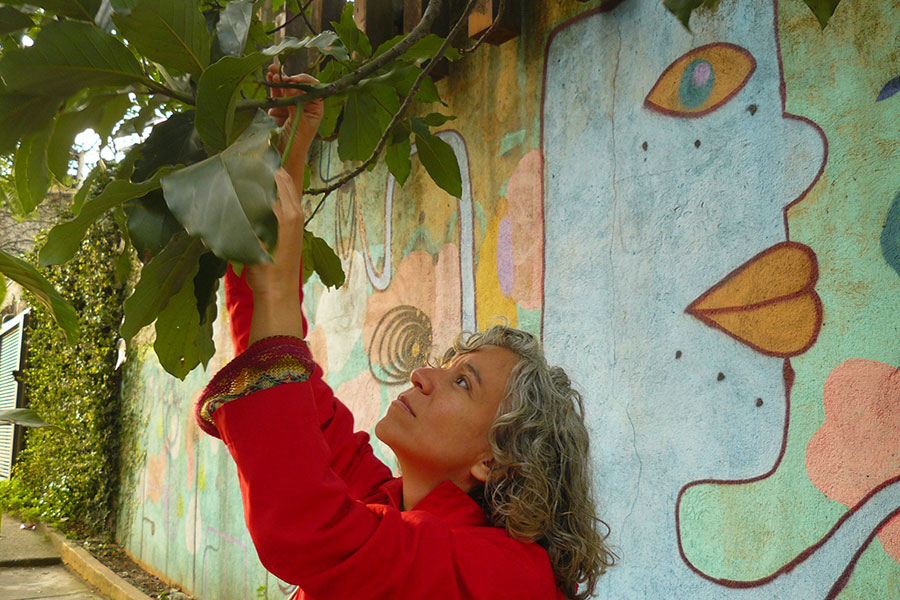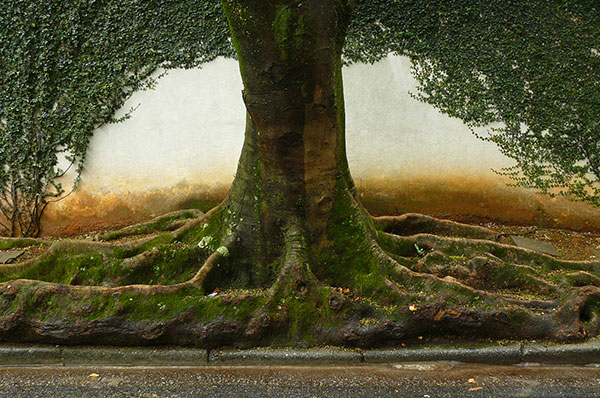
Bio
Fernanda Mascarenhas is a textile artist, natural dyer, dance performer, graphic designer, and longtime Zen-Buddhist practitioner from São Paulo, Brazil. She began her artistic journey through dance. After graduating from the University, she started working as a graphic designer. At the same time, Fernanda cultivated her dancing career as an interdisciplinary performer before falling irrevocably in love with natural dyeing.
In 2016, she started researching dyeing with plants to develop a costume for her performance work. This costume won a prize, which enabled her to travel to Japan to learn more about traditional ways of natural dyeing and weaving. Since then, Fernanda has been focusing on making art based on ancient techniques of natural dyeing with plants. Whilst a large inspiration comes from Japanese culture, locally grown plants have been her essential material and passion.
Engaging with the slow process of natural dyeing in urban areas and time, she has respected the generosity of nature, its cycles and changes, while intending to reclaim the ancestral power of plants, such as their medicinal use. Nowadays, besides teaching, she runs a studio to create one-of-a-kind textile pieces and writes the Plants and Colours blog to share her passions and experiences.
Curriculum Vitae
Statement
“Once I was asked how I shifted from performance to natural dyeing and textiles since it must be quite different. I think that my whole work is the answer to this question. I see our bodies as nature and, other than approach or technique, there is not much difference to me in how we use and navigate our bodies within a larger cycle of nature.
As a performer, I have immersed myself in Japanese culture through my body. I have studied the katas deeply through Seitai-ho and Noh theatre practices and as a Zen Buddhist lay practitioner. Katas are basic body postures that we can find in many areas of traditional Japanese culture and religion, such as Kabuki and Noh Theatre, Tea Ceremony, and Zen Buddhism. I’ve realized the great value of craft art for Japanese culture. It doesn’t matter what kind of art it is, ceramic, weaving or natural dyeing, all of them, without exception, have the body as a starting point. This body is inseparable from the environment that surrounds it, it’s nature itself. Not only in Japanese culture we can find this intrinsic relationship between the bodies, the culture, and the natural cycles. Numerous traditional communities such as the Canadian first nations or Brazilian indigenous people have this way of being at the core of their cultures. I believe these distinguishing cultures and bodies are mirrors of their environments.
This is how I understand and make art. This is my search. My work is inseparable from my body and my environment. I use as a material what I can achieve and glean: plants, scraps of fabric, paper, thread, and my body. Usually, I don’t sketch before gleaning the material. I don’t search for the ideal hue to express myself. My way is quite the opposite: plants offer to me their colours and shapes. Then I use the results to compose my work. I try to recollect feelings about the place that the plants came from. When I stitch the scraps of fabric to compose the whole work, it seems that I can breathe that unique instant, that unique place.
In both performance and textiles, I try to catch the impermanent and ephemeral pulse of life, imprint on fabric or body, levels of memory to reveal the sacred nature around us.”

